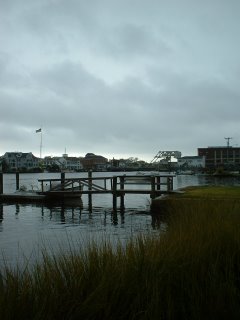
A legendary maritime destination – for over 300 years.Long before Mystic Seaport’s ships, shops and shipyard, the banks of the Mystic River were filled with...ships, shops and shipyards. Since the 1600s, this historic area has been a center of shipbuilding. Between 1784 and 1919 – the golden age of American maritime enterprise – more than 600 vessels were constructed along the Mystic River. But with the advent of steam power and the decline of wooden shipbuilding after the Civil War, textile manufacturing became Mystic’s dominant industry.
Big dreams during the Great Depression.As the great Age of Sail gave way to steamships and railroads, wooden ships and boats were turned into firewood and the nation’s seafaring traditions began to disappear, three Mystic residents decided to work together to keep the past alive.
On December 29, 1929, Edward E. Bradley, an industrialist, Carl C. Cutler, a lawyer, and Dr. Charles K. Stillman, a physician, signed the papers incorporating the Marine Historical Association, today known as Mystic Seaport. Their dream: create a dynamic, educational institution to preserve America’s maritime culture – and turn the achievements of a past era into an inspirational force for the future.
Time to get growing.Despite the economic conditions of the Great Depression, Mystic Seaport grew rapidly. Donations of log books, photography, ships plans and other maritime artifacts poured into the one-building museum. In 1941, Mystic Seaport acquired the Charles W. Morgan, the country’s last wooden whaleship from the once-great Yankee fleet. Historic buildings from across New England were also moved in to complement the Morgan – and the authentic coastal village area of Mystic Seaport was born.
Over the next 50 years, Mystic Seaport experienced explosive growth, amassing the world’s largest collections of maritime photography (over 1 million images) and boats (nearly 500), as well as collecting two million other maritime artifacts. And the 1970s saw the creation of the Henry B. duPont Preservation Shipyard, additional exhibition buildings and several new accredited educational programs.
Mystic Seaport reaches its goals. Then, sets new ones.By the 1990s, Mystic Seaport was widely recognized as the nation’s leading maritime museum. In 1996, Mystic Seaport underscored its mission to create a broad public understanding of the relationship of America and the sea with a six-week seminar entitled America and the Sea, which encouraged college professors from around the country to incorporate maritime history into their teachings.
In 1998, Mystic Seaport began construction of the freedom schooner Amistad – marking a major educational program centered on the re-creation of an historic vessel from the keel up. In 2000, the Museum published its 70th publication, America and the Sea: A Maritime History, described by Kirkus Reviews as “the definitive work on the subject.” And in the summer of 2000, the dramatic exhibit Voyages: Stories of America and the Sea opened to national acclaim.
Bringing hundreds of years of history into the future.Now, Mystic Seaport is making the history of America’s relationship with the sea even more accessible to all-new audiences. As part of a $35 million renovation that includes new exhibit halls and reception areas, the Museum’s new, state-of-the-art Collections Research Center provides easy and convenient ways for scholars and researchers from around the world to access Mystic Seaport’s renowned archives, via the Internet and integrated databases. It’s just one of many ways this showcase of the past two centuries is preparing for the next one.
For more visit: http://www.mysticseaport.org
No comments:
Post a Comment